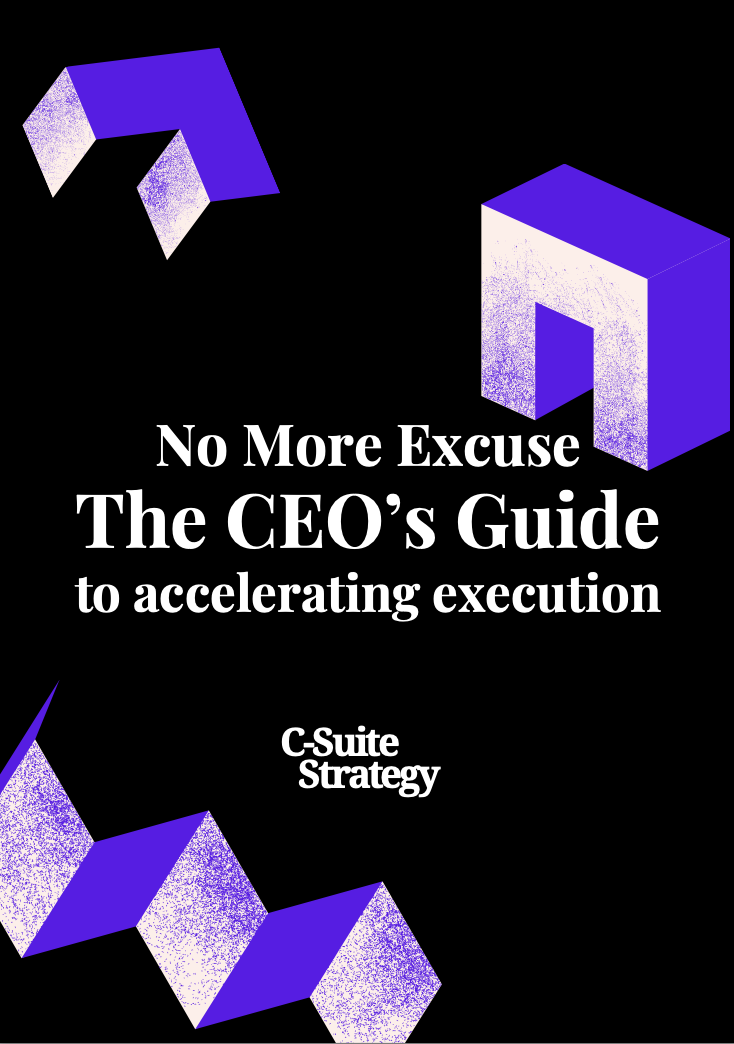
Understanding the Timing of Leadership Changes
Recognizing the Right Moment for Leadership Transition
In the dynamic world of business, the timing of leadership changes can significantly impact a company's trajectory. CEOs often face the challenge of determining when to step down, a decision that requires careful consideration of various factors. The timing of CEO departures can influence the company's stability and future growth, making it crucial for chief executives to assess the right moment to transition.
Recent trends indicate a record number of CEO exits, with many stepping down in January, a time often associated with new beginnings. This period, sometimes referred to as "Gray Christmas," sees a spike in CEO resignations as companies prepare for the new fiscal year. Understanding these patterns can help CEOs plan their exits strategically, ensuring a smooth transition for the company.
Moreover, the rise in CEO turnover highlights the importance of strategic succession planning. Companies must be prepared for leadership changes, whether due to planned retirements or unexpected departures. By recognizing the right moment to transition, CEOs can contribute to maintaining company stability and building a lasting legacy.
For further insights on navigating leadership transitions, explore the art of leading leaders as a CEO, which provides valuable strategies for ensuring a seamless transition.
Strategic Succession Planning
Crafting a Seamless Succession Strategy
Developing a robust succession plan is an indispensable component when a CEO transitions. Preparing the company for the handover requires foresight and precision. According to industry analysts, strategic succession planning has been pivotal in mitigating risks associated with high executive turnover. When the time arrives for a chief executive to step down, companies should already have a pool of potential candidates who have been groomed over the years to step into the CEO role. This involves not only identifying internal and external candidates but also ensuring they are aligned with the company’s future vision and culture.- Identifying Leadership Qualities: The incoming CEO should not only have a strong grasp of the business but should also embody the values and ethics of the organization. They will need to navigate the complex landscape of being a chief executive, especially during a time of change.
- Involving Stakeholders: Engage board members and other stakeholders early in the process. Their insights and support are critical in developing a strategy that ensures a smooth transition, especially in public companies where CEO changes are highly scrutinized.
- Developing the Next Generation: Cultivating a pipeline of leadership talent is more important than ever, especially given the increasing number of CEO departures. Succession planning should be viewed as an ongoing process, where potential leaders are continuously developed and monitored.
Building a Lasting Legacy
Crafting a Legacy That Endures
As CEOs prepare to step down, the concept of legacy becomes paramount. The impact of a chief executive extends beyond their tenure, influencing the company’s trajectory for years to come. Building a lasting legacy is not just about the achievements during your time in the CEO role but also about setting the stage for future success.
One of the key elements in crafting a legacy is ensuring that the values and vision you have championed continue to resonate within the company. This involves embedding these principles into the company culture, making them a part of the organizational DNA. When CEOs leave, their departure should not create a vacuum but rather a seamless continuation of the strategic direction they have set.
Another aspect to consider is the development of future leaders. By investing in leadership development programs and mentoring potential successors, you ensure that the company is equipped with capable individuals ready to take on new challenges. This not only aids in a smooth transition but also reinforces the stability of the company during periods of change.
Moreover, it’s essential to recognize the importance of diversity in leadership. Encouraging the rise of women CEOs and other underrepresented groups can enrich the company’s perspective and drive innovation. As the number of women in leadership roles grows, so does the potential for diverse ideas and strategies that can propel the company forward.
Finally, consider the broader impact of your leadership on the industry and community. Whether through sustainable business practices or community engagement, the legacy of a CEO can extend beyond the confines of the company, influencing societal change and setting a benchmark for other public companies.
In conclusion, building a lasting legacy requires foresight and a commitment to nurturing the company’s future leaders. By focusing on these elements, CEOs can ensure that their influence endures long after they have stepped down, leaving a mark that withstands the test of time.
For more insights on the daily operations and strategic roles within the C-suite, explore this comprehensive guide.
Maintaining Company Stability During Transition
Ensuring Stability Through Guiding Principles
During leadership transitions, maintaining company stability is paramount. A shift in the CEO role can ignite uncertainty, affecting everything from employee morale to investor confidence. Ensuring a seamless transition requires a deep understanding of the organization's core principles and the ability to navigate the nuances of turnover with finesse. Leadership changes often elicit concerns around the continuity of business strategies and the long-term vision of the company. Effective leadership transitions are characterized by preserved strategic direction and minimized disruptions. Public companies, particularly, face scrutiny during periods of CEO departures as stakeholders worry about the continuity of performance. To mitigate these risks, establishing a robust interim leadership mechanism is crucial. This may involve appointing a temporary chief executive or reinforcing the role of other senior leaders to ensure there is no vacuum in guidance. A clear delegation of responsibilities can provide stability while the board seeks the next permanent leader. Moreover, the support and endorsement of the exiting CEO can play a crucial role in easing the transition. Challenging assumptions that turnover inevitably leads to instability, past evidence suggests that when a CEO steps down voluntarily, and with proper planning, companies often experience a 'gray' period that provides time for adjustment rather than abrupt disruptions. Companies aiming to thrive through CEO transitions should remember that the stability during such periods stems not from stalling change but from strategically managing it. A comprehensive succession plan as discussed in earlier sections lays the groundwork, while clear communication assures everyone from employees to investors that the organization's course remains steady during an otherwise challenging time."Communicating the Transition Effectively
Communicate with Clarity and Consistency
Transitioning from a CEO role is no small feat, and effective communication is crucial to a smooth changeover. As you consider stepping down, transparency with internal and external stakeholders cannot be overstated. Here’s how to ensure the message is clear and positively received:- Timely Announcements: Informing the board, employees, and the public at strategic intervals can help manage expectations and preempt rumors. With the record number of CEO exits in recent years, understanding the right timing protects the company's reputation and market confidence.
- Unified Messaging: A consistent narrative across all communication channels reinforces the stability of the company. This cohesion is essential whether addressing employees, shareholders, or the media.
- Incorporate Feedback: Surveys or town hall meetings can be invaluable forums for gathering thoughts or concerns from your team. This feedback helps tailor your communication style and ensures no stakeholder group feels left in the dark.
- Highlight Successors: Clearly identifying and introducing the incoming leader can calm nerves within the company. Providing insights into their qualifications and vision paints a reassuring picture of continuity.














